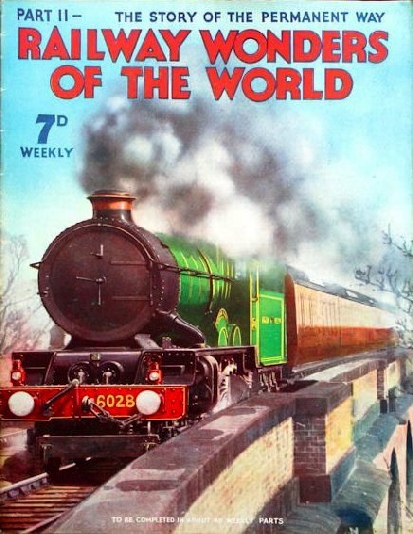
© Railway Wonders of the World 2024 | Contents | Site Map | Contact Us | Cookie Policy


Part 11
Part 11 of Railway Wonders of the World was published on Friday 12th April 1935.
This issue contained a photogravure supplement featuring Stations from the Air, the first of two such features in the part work.
The Cover
The cover represents the Great Western “King” class locomotive - “King Henry II”. It belongs to the most powerful express locomotive class used on the GWR and works the principal services to and from the West of England. The “King Henry II” has 6 ft 6 in driving wheels, four cylinders 16½ in diameter by 28 in stroke, carries 250 lb per sq in working pressure and weighs 135¾
tons in full working order.
This illustration shows “King Henry II” hauling the "Cornish Riviera Express", and this was later used as a black and white art plate at the front of part 25 which formed the frontispiece to Volume 2.
